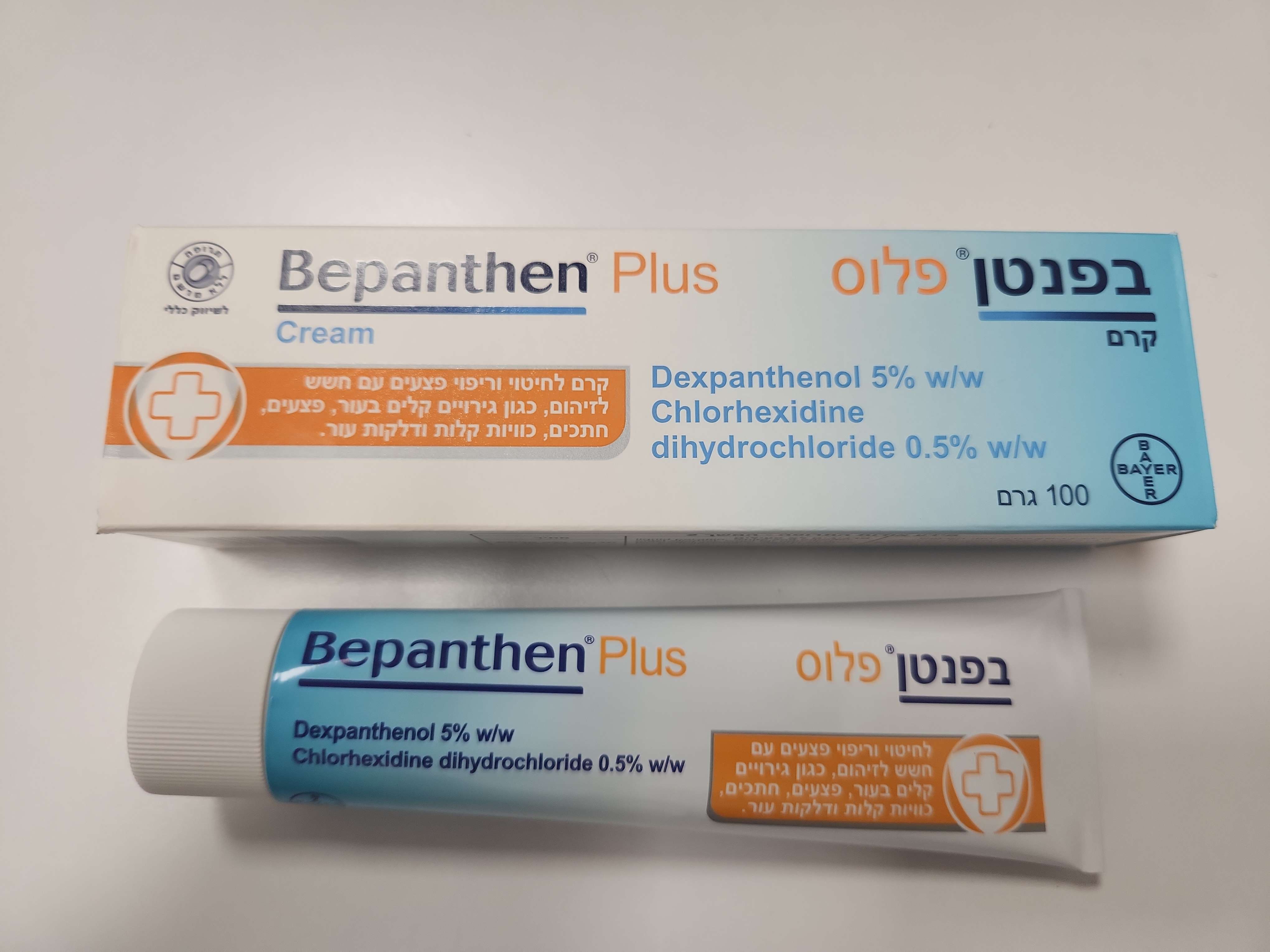Quest for the right Drug

בפנטן פלוס BEPANTHEN PLUS (CHLORHEXIDINE DIHYDROCHLORIDE, CHLORHEXIDINE HYDROCHLORIDE, DEXPANTHENOL)
תרופה במרשם
תרופה בסל
נרקוטיקה
ציטוטוקסיקה
צורת מתן:
חיצוני : TOPICAL
צורת מינון:
קרם : CREAM
עלון לרופא
מינוניםPosology התוויות
Indications תופעות לוואי
Adverse reactions התוויות נגד
Contraindications אינטראקציות
Interactions מינון יתר
Overdose הריון/הנקה
Pregnancy & Lactation אוכלוסיות מיוחדות
Special populations תכונות פרמקולוגיות
Pharmacological properties מידע רוקחי
Pharmaceutical particulars אזהרת שימוש
Special Warning עלון לרופא
Physicians Leaflet
Pharmacological properties : תכונות פרמקולוגיות
Pharmacodynamic Properties
5.1 Pharmacodynamic properties ATC Code: D08AC52 Mechanism of Action/pharmacodynamics effects/clinical efficacy Dexpanthenol is rapidly converted in cells into pantothenic acid which, as a component of the essential coenzyme A, plays a key role in the metabolism of every cell. Pantothenic acid is essential to the construction of the epithelium of skin and mucous membranes. During wound healing, the mitosis rate and the tear resistance of collagen fibres increase. Chlorhexidine dihydrochloride is a known and well-tolerated antiseptic with bactericidal activity against Gram-positive bacteria, e.g. sensitive strains of Staphylococcus aureus, which are the most common causative agents of skin infections. To a slightly lesser degree, it is also effective against Gram-negative microbes. Some species of Pseudomonas and Proteus are resistant. It is only weakly active against fungi and is ineffective against viruses. Pharmacodynamics No studies have been carried out. Clinical efficacy No data available
Pharmacokinetic Properties
5.2 Pharmacokinetic properties Absorption Dexpanthenol is absorbed quickly by the skin, converted immediately into the vitamin pantothenic acid and added to the endogenous pantothenic acid pool. There are no indications of chlorhexidine absorption through unbroken skin in adults. When infants were bathed in a 4% chlorhexidine gluconate detergent solution, chlorhexidine was detected at low concentrations (≤1 µg/ml) in the blood. Distribution In the blood, pantothenic acid is bound to plasma proteins (in particular beta-globulin and albumin). In healthy adults, approximately 500 – 1000 µg/L is found in whole blood and approximately 100 µg/L in the serum. Due to low percutaneous absorption, there are few reliable facts concerning the distribution of chlorhexidine in organs and tissue. After oral administration (300 mg), maximum plasma levels of approx. 0.2 µg/mL are reached after 30 minutes in healthy adults. Metabolism Pantothenic acid is not broken down in the body but is excreted unchanged. Elimination 60 – 70% of an oral dose of pantothenic acid is excreted in the urine and the rest in the faeces. Adults excrete around 2 – 7 mg per day in urine and children 2 – 3 mg. Topically applied chlorhexidine is not absorbed percutaneously. Following oral administration, chlorhexidine is eliminated almost completely in the faeces. Kinetics in specific patient groups: No studies have been carried out.

שימוש לפי פנקס קופ''ח כללית 1994
לא צוין
תאריך הכללה מקורי בסל
לא צוין
הגבלות
לא צוין
מידע נוסף
